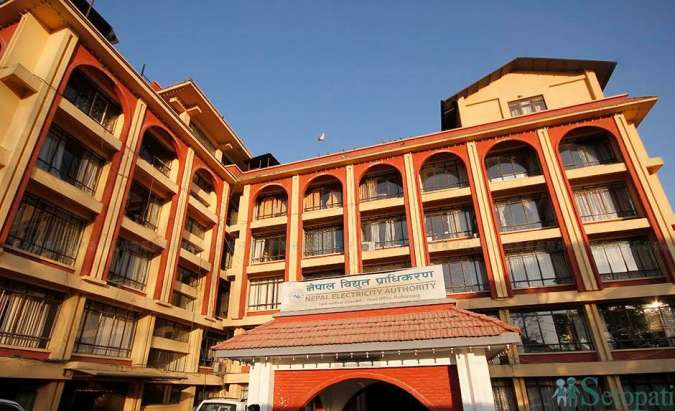A recent announcement by the Nepal Electricity Authority (NEA) regarding its intention to issue an Initial Public Offering (IPO) to raise approximately Rs 60 billion has garnered positive public attention. However, this opinion piece advocates for an alternative approach: asset monetization. It will highlight the benefits of asset monetization and underline the potential pitfalls associated with an IPO, especially in the envisioned regulatory landscape of power market.
Challenges with IPO:
NEA holds a near-monopoly in electricity sector and operates as a regulated entity. The Electricity Regulatory Commission (ERC) determines retail electricity tariffs duly considering the public interest objectives associated with the electricity supply. This regulatory setting restricts NEA's Return on Equity (RoE) or Return on Assets (RoA) to levels typically lower than those of listed companies. Thus, IPO investors might struggle to achieve expected return unless NEA generates significant profits from power exports and dividends from its subsidiaries.
Second, so far it is unclear whether NEA intends to utilize the IPO proceeds to finance new projects or reduce its debt. In the latter case, both IPO investors and NEA management should weigh the cost of borrowing – typically lower for a state-owned utility – against the cost of equity. Unless these two costs align, proceeds should fund new projects. Even then, from an IPO investor’s perspective, financing new generation projects is attractive in terms of return compared to the investment into transmission and distribution projects. Profitability inherent to the IPO investment is thus unclear unless the use of proceeds is explicitly stated.
Third, NEA is a vertically integrated monopoly engaged in generation, transmission, and distribution of electricity. However, the power market's future design envisions the separation of these functions into distinct entities. Hydropower Development Policy (2001), Corporate Development Plan of NEA (2019-2024) and the new electricity bill under consideration have envisaged the unbundling of NEA’s operations. Therefore, the future unbundling process through which NEA shall pass constitutes regulatory risks for IPO investors.
Finally, the news so far floated in public revealed a rough figure of almost Rs 60 billion to be collected from the domestic capital market. Substantial magnitude of this proceeds is likely to offset the fund availability for the generation projects of private developers. One-shot collection from such issue during times when government is heavily mobilizing internal borrowing to fund fiscal deficit may cause resource scarcity for the private sector power generation projects and other sectors of the economy.
Why asset monetization is a better option?
Asset monetization refers to the process of converting an asset into cash or liquid form of value. Asset monetization, a strategy to leverage private sector capital and efficiency, presents an appealing alternative to an IPO. In infrastructure sector, the public sector agency could leverage capital from the brownfield assets like roads, power plants, transmission lines, etc. to finance the creation of similar or other greenfield assets. There are altogether 14 hydropower plants (having installed capacity greater than 5MW) in operation with a total installed capacity of 564 MW under full ownership of NEA. Given the availability of tariff determination methodology, operational power plants except storage projects, are the most viable and first assets to begin the monetization. Monetization is therefore not only an alternative to IPO but also eliminates the challenges pertinent to the IPO.
First, the monetization of generation assets empowers NEA to explore a range of strategies, including Infrastructure Investment Trusts (InVITs), Tariff (PPA)-Operate-Transfer, Structured Bonds, and more. Given the increasing depth of international financial market and diversity of investor’s risk-appetite, these schemes, tailorable to different risk-appetites, can attract a diverse range of international investors. This infusion of foreign capital, as opposed to relying solely on an IPO, alleviates the pressure on the domestic capital pool, thereby bolstering the availability of funds for private developers' power generation projects as well as for other sectors of the economy.
Second, the brownfield generation assets owned by NEA entail significantly lower risk in comparison to greenfield projects. This reduced level of risk incentivizes investors to accept lower returns, thereby aligning with the public interest goal of minimizing electricity tariffs. Additionally, the incorporation of take-or-pay provision in power purchase agreements ensures a steady revenue stream and bolsters the valuation of the project. As a result, a corresponding cohort of investors with an appetite for a given risk-return profile will participate in the bidding and investment processes. Consequently, the dual public interest objectives, one aimed at reducing tariffs and the other at increasing project valuation, are achievable through monetization.
Third, monetizing generation assets could mark a pivotal move in the direction of achieving the objective of unbundling NEA's operations, effectively disentangling generation from transmission and distribution. The funds generated through this monetization process can be allocated to the expansion and reinforcement of transmission and distribution networks. Equally important is its potential to enable NEA to focus entirely on improving network efficiency by adopting cost-effective technologies, thereby reducing the overall operational costs.
Finally, in the context of asset monetization, NEA's capital structure remains unaltered by the proceeds generated. Maintaining a consistent debt level, the average cost of capital for NEA remains steady. Conversely, in the event of an IPO issuance, the weighted average cost of capital increases as the share capital expands, encompassing the addition of public shares. Ultimately, through monetization strategies, NEA can invest in transmission and distribution projects without overburdening its balance sheet with excessive share capital.
In conclusion, given the potential challenges associated with an IPO, exploring asset monetization under suitable schemes appears to be a more desirable route for NEA. To make this a reality, the regulations that permit the operationalization of such schemes must be formulated and put in place. A closer reference of these schemes could be taken from the recent monetization experiences in India where various public assets have been monetized under different schemes.
Disclaimer: The views expressed are the personal opinion of the author and do not reflect the views of the institution to which he is affiliated.

